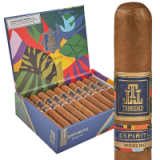The art of pairing wine and cigars is an age-old tradition that dates back to the early 19th century. It is a unique combination of two very different experiences: one of savoring and appreciating fine wines, and the other of enjoying cigars in all their complexity. With this practice comes the opportunity to explore the depths of each element’s individual flavors, as well as how they interact with each other when brought together.
Contents:
At its core, wine and cigar pairing involves finding complementary flavors in both components that work harmoniously with one another. A great pair will bring out the best qualities in both elements; for instance, a spicy Cabernet Sauvignon might be paired with a bold Maduro cigar, highlighting the sweet notes in both items. Similarly, a crisp Chardonnay could be complemented by a light Connecticut Shade wrapper, emphasizing its acidic character without overwhelming it.
In order to truly understand this process it’s important to have knowledge about each component separately; what makes them special? What are their tasting notes? How do they change over time? Each item has its own characteristics which must be taken into consideration when selecting combinations – from aroma profiles and body weight down to complexities such as terroir or fermentation processes used during production. Once these nuances are understood then it’s possible to identify which combinations will provide optimal results for each particular situation or occasion.
The art of pairing wine and cigars also requires an understanding of how different styles can affect the outcome; does full-bodied red go better with an intense robusto than something more mild? Does sparkling white pair better with lighter wrappers like claro or maduro? All these questions need answers before any decision can be made confidently but once answered you’ll have unlocked the secrets behind creating your own personal masterpiece every time.
Introducing the Guide
When it comes to enjoying a relaxing evening, few things are as enjoyable as pairing wine and cigars. While it may seem intimidating at first, the art of matching them is actually quite simple. With a little bit of knowledge about the various types of cigars and wines available, anyone can become an expert in this field.
The goal of this guide is to provide an introduction to the world of pairing wines and cigars. It will cover everything from understanding different cigar shapes and sizes to knowing which type of wine best complements each variety. Readers will learn about how temperature affects both tobacco and grapes in order to make the most out of their tasting experience. There will be tips on finding great quality products that won’t break your bank but still offer an unforgettable smoking or drinking experience.
By following the steps outlined in this comprehensive guide, you’ll soon find yourself becoming a connoisseur who knows how to match any cigar with its perfect wine companion.
Exploring the Basics of Wine and Cigars
When it comes to enjoying a good cigar, you can’t go wrong with pairing it with an exquisite bottle of wine. This combination has been enjoyed for centuries and provides connoisseurs with an experience that is second to none. But before we dive into the specifics of what makes a great pairing, let’s explore the basics of both cigars and wine.
Cigars are typically made from dried tobacco leaves wrapped in another leaf such as corn husk or plantain leaf. They come in a variety of shapes and sizes, each offering its own unique flavor profile depending on how they were made. When smoked correctly, cigars provide a smooth and flavorful experience that can last anywhere between 30 minutes to several hours – making them perfect for special occasions or when you want to savor something slowly.
Wine also offers plenty of complexity and range in flavors due to its production process. The grapes used are harvested at different times depending on their ripeness levels which affects the overall taste profile once fermented into wine. In general there are four main categories: white, red, rosé (blush) and sparkling wines; all providing distinct aromas and flavors that vary from one type to another. For example red wines tend to be bolder than whites while sparkling wines bring out more refreshing notes like citrus fruits or apples due to carbonation bubbles present in the liquid itself.
The combination of these two elements provides connoisseurs with a truly unique sensory experience that no other beverage can replicate – allowing them to appreciate every single aspect of this special pairing.
The Science Behind Pairing
Pairing wine and cigars is an art that requires a deep understanding of the science behind it. To achieve the perfect blend of flavors, one must understand the nuances between each type of cigar and each varietal of wine. Knowing which characteristics will complement or clash with each other is key to achieving harmony in this delicate balance.
When selecting a cigar to pair with a certain type of wine, body and flavor are two important factors to consider. Cigars that have high-strength, full-bodied flavors such as earthy notes or hints of coffee can overpower lighter wines such as Pinot Grigio or Sauvignon Blanc. On the other hand, milder cigars like Connecticut Shade Wrapper varieties pair better with lighter wines because their subtle flavor does not overpower them.
Likewise, pairing wines with cigars also involves careful consideration for aroma and acidity levels. Wines that are high in tannins tend to be more acidic than those with lower levels; these higher acidity wines often work well when paired with stronger flavored cigars since they can cut through the intensity without compromising flavor complexity on either side. Conversely, sweeter wines like Rieslings should be paired with mellower tasting cigars like Maduros so as not to overwhelm the taste buds.
Aromas, Flavors and Textures
As any connoisseur of cigars and wine can attest, the complex aromas, flavors and textures that these two beloved products bring to the table is something special. When it comes to creating a memorable experience with them both, it is important to understand how best to combine them in order to truly unlock their potential.
When selecting a cigar for your pairing experience, you want something that will add an extra level of complexity. Look for notes such as earthy tones or woodsy aromas. Be sure to consider the body of the cigar; if you’re looking for a milder option then go with something lighter on flavor while if you prefer a bolder taste then select one with more intense notes. As far as size goes, typically smaller cigars are better suited when trying out different combinations since they have less tobacco which makes it easier to distinguish flavors and aromas between both items.
Wine selection is equally important when attempting this art form; try opting for something that has fruitier characteristics such as Pinot Noir or Sauvignon Blanc which pairs nicely with fuller-bodied cigars like Maduros or Habanos. Conversely, opt for white wines such as Chardonnay or Riesling when going with mellower cigars like Connecticut Wrappers or Sumatra Wrappers – these types of whites tend towards dryness so they don’t overpower the cigar’s subtle nuances but still offer enough complexity in terms of aromas and flavors on their own accord. Always keep an eye out for new pairings – experimenting can often lead to unexpected surprises.
Classic Combinations to Try
When it comes to pairing wine and cigars, there is no single answer. While some prefer a particular cigar-wine combination, others might be more open to experimenting with new ones. Regardless of your preference, there are certain classic combinations that never fail to please the palate. From bold reds paired with full-bodied smokes to crisp whites with mellow aromatics, here are a few great pairings for you to try out:
For those looking for something a bit richer in flavor, consider trying a strong Cabernet Sauvignon or Shiraz alongside an equally robust smoke like the Bolivar Coronas Extra or Romeo y Julieta Wide Churchills. The flavors of these two will complement each other perfectly – the complexity of the tannins and dark fruit notes in the wine will be beautifully complemented by the earthy and spicy flavors of the cigar. This combination is sure to satisfy even the most discerning palate.
If you’re looking for something lighter and more refreshing, opt for a light-bodied Pinot Noir or Chardonnay coupled with a milder cigar such as an Ashton Cabinet Selection No. 8 or Macanudo Cafe Prince Philip. These subtle yet flavorful wines will bring out all sorts of nuances from your chosen stick – woodsy notes, leathery hints, grassy overtones – without overpowering them like their bigger counterparts would do. A glass (or two) of this combination is guaranteed to provide an enjoyable experience.
If you’re feeling adventurous and want to try something truly unique then look no further than blending Champagne or sparkling white wines with sweetened cigars such as those made by La Aurora Preferidos Double Robusto Maduro or CAO Criollo 98 Short Churchill Maduro cigars. The bubbly effervescence of champagne combined with chocolatey sweetness from the wrapper leaves creates an entirely different experience which can only be described as delightful.
What Not to Do
When it comes to enjoying a fine cigar and a glass of wine, there are many dos and don’ts that you should be aware of. While some people might assume that any combination will work, this isn’t the case. In fact, there are certain pairings that can really ruin the experience and make both components taste bad. Here is what not to do when pairing wine and cigars together.
The most important rule is never to combine red wines with light-bodied cigars. Red wines tend to have much higher levels of tannins than white or sparkling varieties, which can clash horribly with lighter-flavored smokes such as Connecticut shade wrappers or Sumatra tobaccos. It’s best to stick with whites or rosé if you’re looking for an enjoyable pairing with these types of cigars.
Avoid pairing bolder flavored cigars with sweet wines like Riesling or Muscat. The sweetness in these wines can easily overwhelm the smokiness from the cigar leaves and cause them both to taste off balance – even worse if you happen to choose an overly sweet vintage. To keep things balanced opt for dry styles such as Cabernet Sauvignon or Chardonnay instead; they’ll bring out the flavors in your smoke without overpowering them too much either way.
Never mix strong bodied smokes like Maduros or Habano leaf wraps with heavy tannic reds like Barolo or Brunello di Montalcino unless you’re looking for an intense flavor experience. These types of powerful blends need more subtle accompaniments such as Pinot Noir or Sangiovese so that their complexity doesn’t get lost on palates unable to handle all those big flavors at once.
Experimentation for Advanced Connoisseurs
Experimentation is a key component of the wine and cigar pairing process for advanced connoisseurs. When it comes to enjoying these luxury items, there are countless combinations that can be explored to find the perfect match. From choosing between full-bodied or light cigars, to selecting a red or white wine, experimentation allows you to discover new and exciting pairings that will satisfy your palette.
When looking for the right combination, one should consider how different notes in both items interact with each other. For instance, a strong cigar may overpower a delicate wine while an acidic red might conflict with mellow tobacco flavors. It is important to select components with complimentary notes in order to create harmony when they are paired together. With this approach, each sip and puff can be savored and appreciated as part of an enhanced experience.
To get started on your journey into experimental cigar and wine pairing try sampling different types of cigars such as robustos or coronas alongside various wines like Pinot Noir or Chardonnay. This will give you some insight into which pairings work best for your particular tastes and preferences so you can begin crafting delicious custom concoctions.
Creating Your Own Signature Pairings
Creating your own signature pairings is an essential part of mastering the art of pairing wine and cigars. With a little bit of knowledge, experimentation, and creativity, you can create memorable combinations that will delight your palate. To begin crafting your very own signature pairings, there are a few key factors to consider.
First off, it’s important to keep in mind the basic principles of cigar and wine pairing – namely that bold flavors should be paired with full-bodied wines, while lighter flavors should be paired with lighter wines. Once you have this fundamental principle in mind, it’s time to start experimenting. Try out different flavor profiles until you find something that really speaks to you. When selecting a cigar for your pairing experiment, look for one with prominent notes like coffee or chocolate as they tend to work best when matched up with certain types of wines.
When it comes down to actually choosing which wines work best with specific cigars, research is key. Consider looking into popular pairings made by experts and then adjust accordingly based on what appeals most to your personal taste buds. By taking the time to explore different options before settling on a particular combination, you can come up with some truly unique blends that perfectly capture your style preferences.











